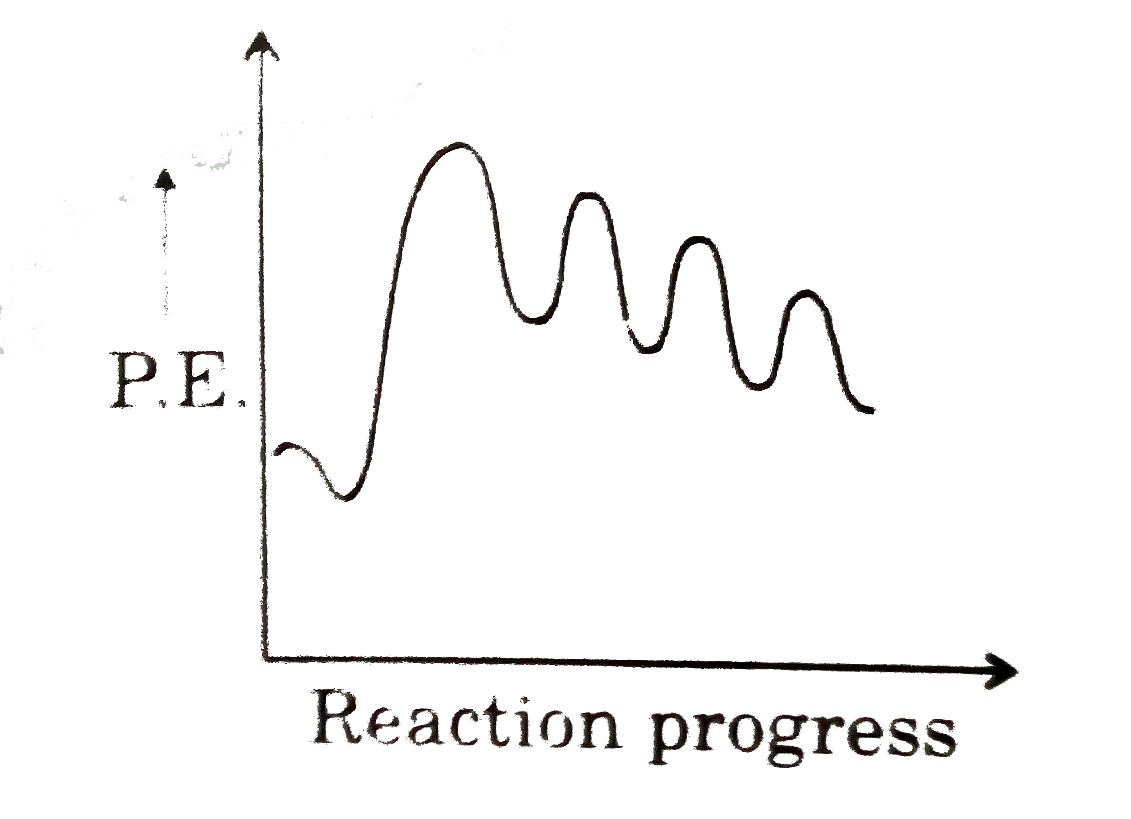In which of the following reactions, an increase in the volume of the container will favour the formation of products ?
2NO2(g)→2NO(g)+O2(g)
H2(g)+I2(g)→2HI(g)
4NH3(g)+5O2(g)→4NO(g)+6H2O(l)
3O2(g)→2O3(g)
The correct Answer is:A
To determine in which reaction an increase in the volume of the container will favor the formation of products, we need to analyze the number of moles of gas on both the reactant and product sides of the reactions. According to Le Chatelier's principle, if the volume of a system is increased, the equilibrium will shift towards the side with more moles of gas.
1. Identify the Reactions: List the reactions provided in the question. For this example, let’s assume we have the following reactions:
- Reaction 1: A(g)+B(g)⇌C(g)+D(g)
- Reaction 2: 2E(g)⇌F(g)
- Reaction 3: G(l)+H(g)⇌I(g)+J(g)
- Reaction 4: 3K(g)⇌2L(g)+M(g)
2. Count Moles of Gases: For each reaction, count the number of moles of gaseous reactants and products.
- For Reaction 1: 2 moles of gas on the left (1 A + 1 B) and 2 moles of gas on the right (1 C + 1 D).
- For Reaction 2: 2 moles of gas on the left (2 E) and 1 mole of gas on the right (1 F).
- For Reaction 3: 1 mole of gas on the left (1 H) and 2 moles of gas on the right (1 I + 1 J).
- For Reaction 4: 3 moles of gas on the left (3 K) and 3 moles of gas on the right (2 L + 1 M).
3. Calculate Change in Moles (Δn): Calculate the change in moles (Δn) for each reaction.
- Reaction 1: Δn = (2) - (2) = 0
- Reaction 2: Δn = (1) - (2) = -1
- Reaction 3: Δn = (2) - (1) = 1
- Reaction 4: Δn = (3) - (3) = 0
4. Determine the Direction of Shift: Based on the value of Δn:
- If Δn > 0, the equilibrium will shift to the right (towards products) when volume increases.
- If Δn < 0, the equilibrium will shift to the left (towards reactants) when volume increases.
- If Δn = 0, there will be no shift.
5. Identify the Correct Reaction: From the calculations:
- Reaction 1: Δn = 0 (no shift)
- Reaction 2: Δn = -1 (shifts left)
- Reaction 3: Δn = 1 (shifts right, favors products)
- Reaction 4: Δn = 0 (no shift)
Thus, the reaction that favors the formation of products when the volume is increased is Reaction 3.
Final Answer:
The reaction that favors the formation of products when the volume of the container is increased is Reaction 3.
- Reaction 1: A(g)+B(g)⇌C(g)+D(g)
- Reaction 2: 2E(g)⇌F(g)
- Reaction 3: G(l)+H(g)⇌I(g)+J(g)
- Reaction 4: 3K(g)⇌2L(g)+M(g)
- For Reaction 1: 2 moles of gas on the left (1 A + 1 B) and 2 moles of gas on the right (1 C + 1 D).
- For Reaction 2: 2 moles of gas on the left (2 E) and 1 mole of gas on the right (1 F).
- For Reaction 3: 1 mole of gas on the left (1 H) and 2 moles of gas on the right (1 I + 1 J).
- For Reaction 4: 3 moles of gas on the left (3 K) and 3 moles of gas on the right (2 L + 1 M).
- Reaction 1: Δn = (2) - (2) = 0
- Reaction 2: Δn = (1) - (2) = -1
- Reaction 3: Δn = (2) - (1) = 1
- Reaction 4: Δn = (3) - (3) = 0
- If Δn > 0, the equilibrium will shift to the right (towards products) when volume increases.
- If Δn < 0, the equilibrium will shift to the left (towards reactants) when volume increases.
- If Δn = 0, there will be no shift.
- Reaction 1: Δn = 0 (no shift)
- Reaction 2: Δn = -1 (shifts left)
- Reaction 3: Δn = 1 (shifts right, favors products)
- Reaction 4: Δn = 0 (no shift)
The reaction that favors the formation of products when the volume of the container is increased is Reaction 3.
Similar Questions
Knowledge Check
In which of the following reactions, an increase in the volume of the container will favour the formation of products ?
A2NO2(g)⇔2NO(g)+O2(g)B4NH3(g)+5O2(g)⇔4NO(g)+6H2O(l)C3O2(g)⇐2O3(g)DH2(g)+I2⇔2HI(g)In which reaction will an increase in the volume of the container favor the formation of products?
AC(s)+H2O(g)⇔CO(g)+H2(g)BH2O(g)+I2(g)⇔2HI(g)C4NH3(g)+5O2(g)⇔4NO(g)+6H2O(l)D3O2(g)⇔2O3(g)In which of the following reaction the increase in pressure will favour the increase in products ?
AN2(g)+O2(g)⇔2NO(g)BPCl3(g)+Cl2(g)⇔PCl5(g)CPCl5(g)⇔PCl3(g)+Cl2(g)D2CO2(g)⇔2CO(g)+O2(g)
Which of the following reactions favour backward direction ?
View SolutionWhich of the following reactions increase the production of dihydrogen from synthesis gas?
View SolutionWhich of the following reactions will result in the formation of a chiral centre in the product?
View SolutionWhich of the following reaction increases, production of dihydrogen from synthesis gas ?
View SolutionWhich of the following conditions is found in the alveoli which is favourable for the formation of oxyhaemoglobin ?
View Solution

